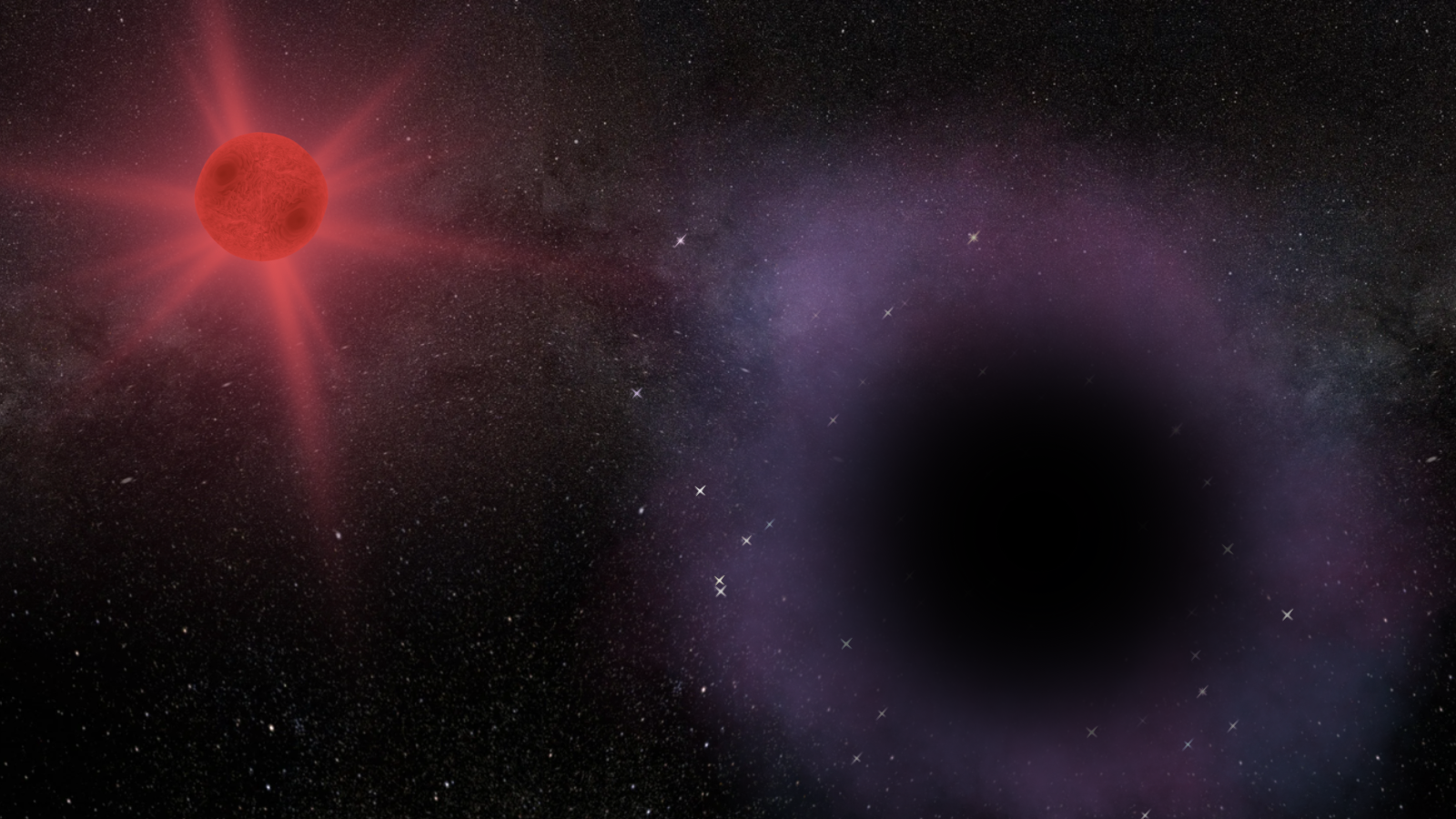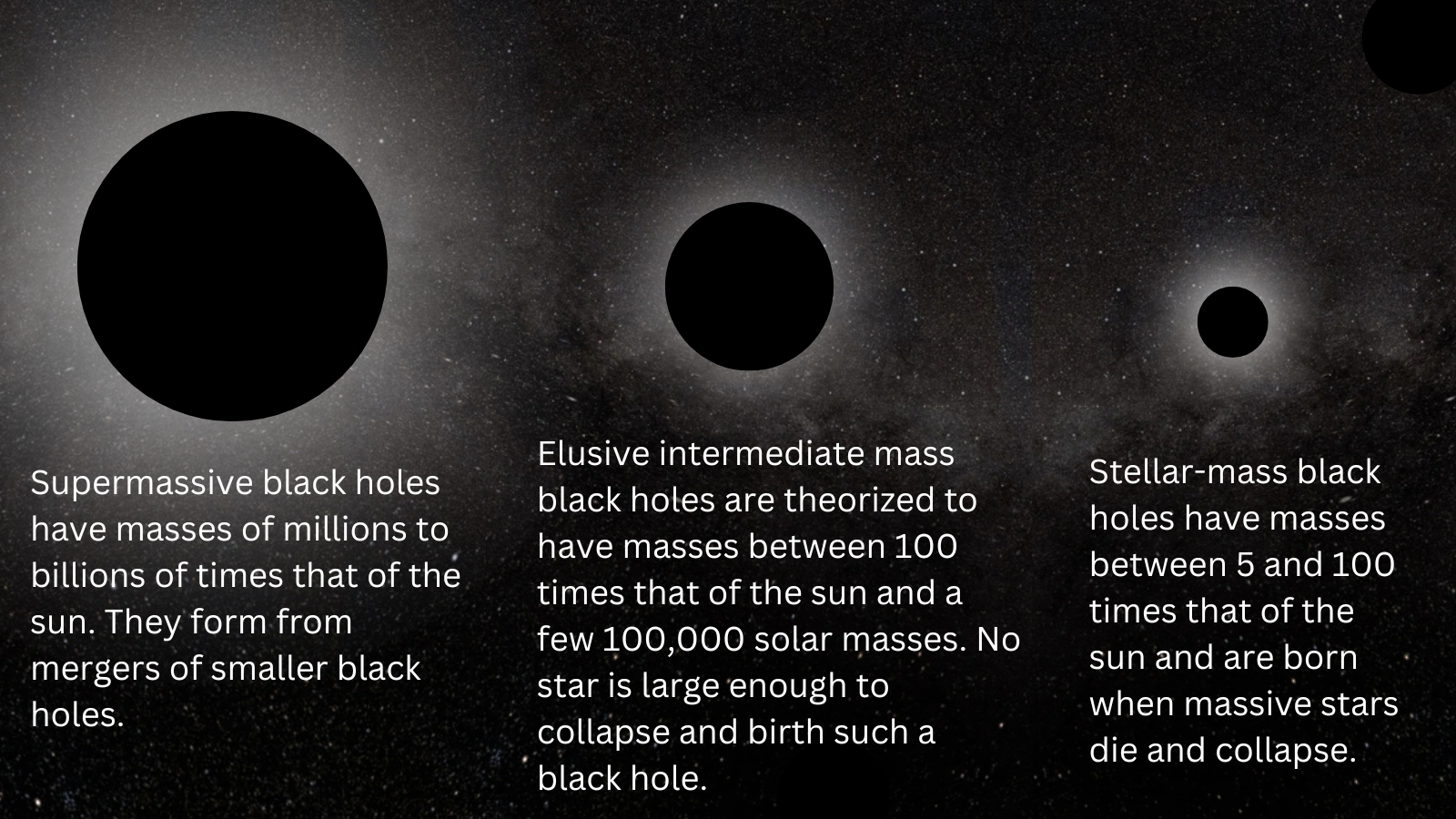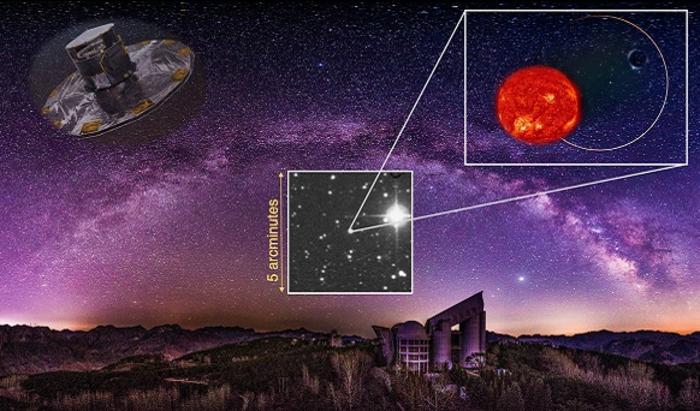
For astronomers, finding a new black hole orbiting an aged red dwarf star is an exciting find in itself, but when that black hole seems to be a "missing link" stellar-mass black hole, you can crank the excitement up to 11! That is exactly what seems to be lurking in binary system G3425, estimated to be around 5,800 light-years away.
The visible component of G3425 is a red giant star, the kind of stellar body you get when a star exhausts its supply of hydrogen fuel and can no longer conduct nuclear fusion in its core. This causes its outer layers (where fusion continues) to "puff out" to as much as 100 times the star's original width.
Our own star, the sun, is currently in its middle age. This means that in around 5 billion years, it will enter its red giant phase and swell up to around the orbit of Mars, swallowing the inner planets, including Earth. Even then, what the red giant sun almost certainly won't have is a stellar-mass black hole as a companion. The team's research is published in the journal Nature Astronomy.
The red dwarf in this system has a mass of around 2.7 times the mass of our sun, but what is really interesting to scientists is the mass of its compact dark companion. This newfound black hole was weighed by a team led by Wang Song from the National Astronomical Observatories of the Chinese Academy of Sciences (NAOC). Its mass is between 3.1 and 4.4 times that of the sun, probably about 3.6 solar masses.
"The black hole falls within the famous mass gap, making it one of the lightest black holes discovered so far," Song told Space.com. "This discovery not only confirms the existence of mass-gap black holes but also shows that binaries containing low-mass black holes can survive a supernova explosion."
Song and colleagues detected this stellar-mass black hole in data collected by the Large Sky Area Multi-Object Fiber Spectroscopic Telescope (LAMOST) and from the Gaia space telescope, which precisely measures the positions of billions of stars in the Milky Way and beyond.
This combination of data and techniques allowed the researchers to observe the black hole's gravitational "tug" on its companion red dwarf star, forcing it to reveal itself.
Related: Scientists waited ages to find a 'missing link' black hole — then stumbled upon 2
Mystery of the missing masses
Black holes have very few defining characteristics, a fact that physicist John Wheeler once described by saying, "Black holes have no hair." In addition to electric charge and angular momentum, one of the characteristics black holes do have that allows astronomers to set them apart is their mass.
The kings of mass are the supermassive black holes that lurk at the hearts of most, if not all, large galaxies, and have masses millions to billions of times that of the sun. More diminutive are elusive intermediate-mass black holes, which have masses between 100 and 100,000 solar masses.
Both of these types of black holes are too massive to form when a star runs out of fuel for nuclear fusion and after repeated collapses and expansion episodes, resulting in a complete collapse under its own gravity. Thus, they grow by greedily feasting on matter around them or by merging with other black holes over and over again.
The smallest astrophysical black holes that we know of are so-called stellar mass black holes, which we find with masses up to 100 times that of the sun. These black holes are just the right size to be born when a star at least eight times as massive as the sun can no longer fuse heavier and heavier elements, and thus can't generate the energy to battle against the inward push of its own gravity.

Over the past 60 years or so, astronomers have found dozens of stellar-mass black holes that fit within a distribution of 5 to 25 solar masses. So far, so good, but there is a problem.
Theories of black hole birth suggest that after a star has lost the majority of its mass via a tremendous supernova explosion that signals gravity's victory, those stars that hang on to just three times the mass of the sun should still be able to form a stellar-mass black hole. So, with that said, the question becomes: where are all the 3 to 5 solar mass black holes?

One possibility is that there is some mechanism that comes into play during a supernova that prevents black holes with 3 to 5 solar masses from forming.
Alternatively, lower-mass black holes may be more likely to get disrupted by "kicks" delivered to them during a supernova explosion and, therefore, less likely to linger in a binary with a visible companion that makes them easier to spot.
This arises from the fact that all black holes, no matter the mass, are bounded by a light-trapping surface called an event horizon that makes them effectively invisible. Black holes in a binary, like the one in G3425, can be inferred by the effect they have on their visible companion. Thus, an unaccompanied "supernova-kicked" black hole won't be visible by these effects because they have no companion to impact.
If that is the case, how did this black hole manage to survive that mechanism and/or resist the kick that should have sent it spiraling away from its companion?
Another puzzle surrounds this system. G3425 is a wide binary with an orbital period of approximately 880 Earth days. The orbit has zero "eccentricity," which means that it is a near-perfect circle. The team can't currently explain this through standard binary evolutionary processes.
"The most surprising thing is the wide circular orbit of the binary," Song said. "The formation of such a binary, especially involving a low-mass black hole, presents a significant challenge to current theories of binary evolution and supernova explosion."
The formation of this red dwarf/black hole binary with a surprisingly wide circular orbit may challenge current binary evolution and supernova explosion theories, but it has delivered a few positives.
These findings prove that quiet and invisible objects in binaries can be detected via the effect they have on their companions and that uncovering lurking low-mass black holes can deliver insights into the evolution of binary systems.







